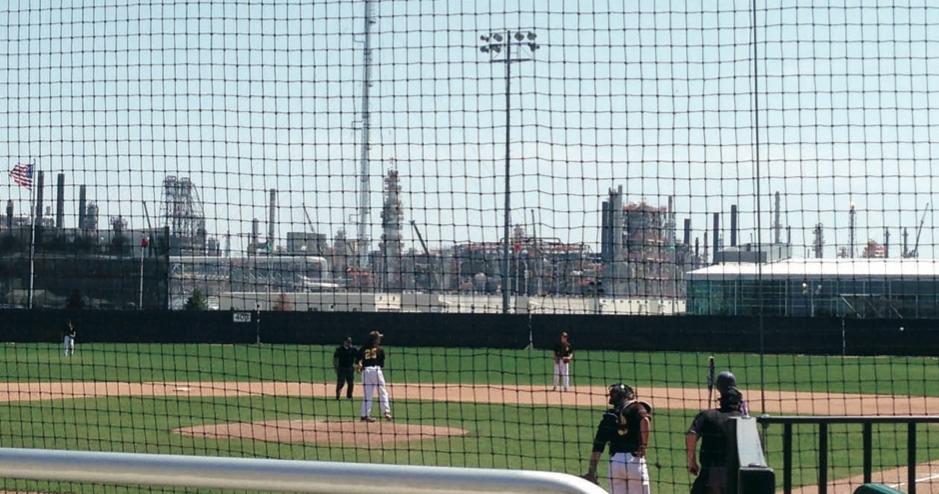
An alarming statistic was released this month by the Center for Effective Government about the vulnerability schoolchildren face from a major chemical release or explosion. One in three children in the United States are at risk of being exposed to a catastrophic release based on the location of their school.
The report found that 19.6 million children attending public and private schools in 48 states fall within a vulnerability zone that contains at least one chemical facility. The facilities located within what the EPA calls a ”vulnerability zone” (VZ) are currently only subject to voluntary reporting of a catastrophic release of a toxic or flammable chemical under the Risk Management Program (RMP) of the Environmental Protection Agency (EPA). A vulnerability zone is determined based on the chemicals used or stored and the quantity of chemicals on site that pose a significant hazard to public health if an explosion or chemical release were to occur.
These types of facilities vary and include refineries, chemical manufacturing plants, water treatment facilities, pulp and paper mills, and facilities that store large amounts of hazardous chemicals. Chemicals such as anhydrous ammonia, chlorine and hydrofluoric acid are deadly and pose a risk not only to schoolchildren but also to workers at these facilities and the surrounding communities.
What does this mean?
We’ve seen what can happen when a “worst case scenario” strikes. The communities in the town of West, Texas know this too well. It’s been over a year since the West fertilizer plant exploded killing fifteen people, injuring hundreds more and destroying schools, a senior home, and entire residential blocks. The students attending the West Middle School, located a mile away from the fertilizer plant were saved because school was not in session. The flammable substance at the West facility is currently not covered under the EPA’s RMP program which is another reminder that amendments to the RMP program are needed.
Where is the risk?
 It’s clear that the immediate threat posed by chemical facilities is real for schools that are located within a chemical risk zone. The heightened level of risk is also real for the families and individuals living within these vulnerability zones. Many of these areas are urban with a high level of concentrated facilities. It only takes one accident to put workers in the plant and the communities outside of the plant at risk.
It’s clear that the immediate threat posed by chemical facilities is real for schools that are located within a chemical risk zone. The heightened level of risk is also real for the families and individuals living within these vulnerability zones. Many of these areas are urban with a high level of concentrated facilities. It only takes one accident to put workers in the plant and the communities outside of the plant at risk.
A report released earlier this year by the Environmental Justice and Health Alliance took a closer look at the surrounding communities living in the vulnerability zones. The findings showed that the poverty rates for communities living near a chemical facility were 50 percent higher than the national average. Also, there was clear evidence of racial and ethnic inequalities between the people living near these hazardous facilities and those not in vulnerability zones.
What needs to happen
Solutions exist and the most important action the EPA should take before the end of the Obama administration is to amend the EPA’s RMP program and require all facilities shift to using safer chemicals and technologies. Safer alternatives to some of the most hazardous substances are available but currently facilities are not required to make the change. We’ve seen that voluntary measures have not worked and the explosion in West is proof that we need to adopt a different approach to how we regulate the chemical industry. A mechanism that encourages self-reporting is not the solution.
The RMP covers 12,700 facilities across the country and just 27 percent of these facilities put 134 million people at risk of a chemical disaster. This is unacceptable and the EPA has the authority to eliminate or reduce virtually all of these hazards.
Systems need to change and President Obama after the West explosion acknowledged this by issuing Executive Order (EO) #13650 on chemical safety and security. The EPA is one of the leading agencies tasked to modernize chemical safety regulations. You have an opportunity to weigh in and let the EPA know it’s time to require chemical facilities to use safer chemicals and technologies.
Take action now and post your comment here.
Schoolchildren should not be exposed to EPA’s “worst case scenario,” and families should not have to anticipate a catastrophic scenario being part of their child’s school day.



